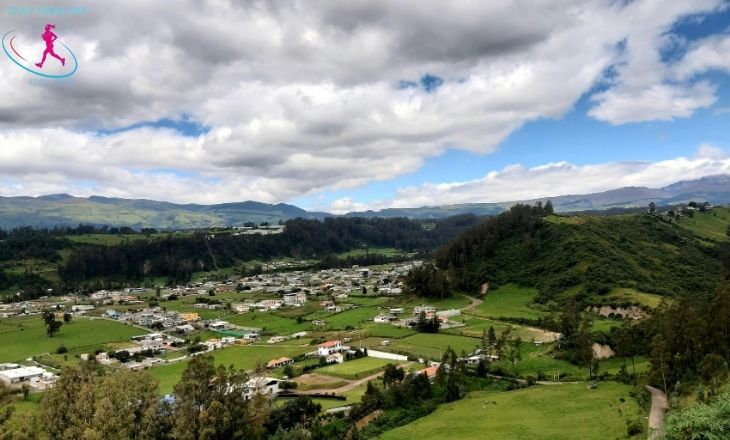In a world where everything seems to move at breakneck speed, the concept of a ‘slow living’ lifestyle offers a refreshing and much-needed antidote to our fast-paced life. But what exactly does slow living entail, and why are so many people turning to it as a way to find balance and fulfillment?
In this comprehensive article, we will explore the philosophy of slow living, its benefits, and how you can incorporate it into your daily life.

The Philosophy of Slow Living
Slow living is a lifestyle choice that encourages a more mindful, deliberate approach to everyday life. It is about valuing quality over quantity, savoring the moment, and finding joy in simplicity. This philosophy counters the relentless push towards a fast-paced life, where time seems to slip away, leaving many feeling overwhelmed and disconnected.
At its core, slow living is about:
Mindfulness
Being present in the moment and fully engaging with whatever you are doing.
Intentionality
Making conscious choices that align with your values and priorities.
Simplicity
Reducing clutter and distractions to focus on what truly matters.
Sustainability
Living in a way that is kind to the environment and future generations.
Connection
Fostering deep, meaningful relationships with people and nature.
The Origins of Slow Living
The slow living movement can trace its roots back to the slow food movement, which began in Italy in the late 1980s. Carlo Petrini started the movement in response to the opening of a McDonald’s restaurant in Rome. He and his supporters wanted to promote traditional, regional cuisine and a slower, more thoughtful approach to food.
Since then, the principles of slow food sustainability, mindfulness, and a focus on quality have been applied to other areas of life, giving rise to the broader slow living movement.

The Impact of a Fast-Paced Life
In today’s society, a fast-paced life is often seen as the norm. We are constantly bombarded with information, faced with tight deadlines, and pressured to achieve more in less time. While this high-paced lifestyle can lead to short-term gains, it often comes at a significant cost to our well-being.
Fast-paced meaning
A fast-paced life refers to a lifestyle characterized by rapid activity, constant movement, and a relentless pursuit of goals. It is often driven by external pressures and societal expectations, leading to a sense of urgency and a lack of time for self-care and reflection.
Some of the negative effects of a fast-paced life include:
Stress and Anxiety
Constantly racing against the clock can lead to chronic stress and anxiety, which can have serious implications for both mental and physical health.
Burnout
The relentless pressure to perform can result in burnout, a state of physical and emotional exhaustion.
Lack of Connection
When life is moving too fast, it can be difficult to maintain meaningful relationships, leading to feelings of isolation and loneliness.
Reduced Quality of Life
The rush to get things done can cause us to overlook the simple pleasures and experiences that make life enjoyable.
Embracing Slow Living: How to Get Started
Transitioning to a slow living lifestyle does not mean abandoning your responsibilities or drastically changing your life overnight. Instead, it involves making small, intentional changes that help you slow down and live more mindfully. Here are some practical steps to get started:
Simplify Your Schedule
Evaluate your commitments and prioritize what truly matters. Learn to say no to activities that do not align with your values or add unnecessary stress.
Practice Mindfulness
Incorporate mindfulness practices such as meditation, deep breathing, or simply taking a few moments each day to pause and reflect.
Declutter Your Space
A cluttered environment can contribute to a cluttered mind. Simplify your living space by getting rid of items you no longer need or use.
Focus on Quality
Whether it’s food, clothing, or relationships, prioritize quality over quantity. Choose to invest in things that bring you joy and satisfaction.
Reconnect with Nature
Spending time in nature can help you slow down and appreciate the beauty of the world around you. Take regular walks, garden, or simply sit outside and enjoy the fresh air.
Limit Screen Time
Technology can be a major source of distraction and stress. Set boundaries for your screen time and make room for offline activities that nurture your soul.

Slow Living in Different Aspects of Life
Slow living can be applied to various aspects of life, from the way we work to how we spend our leisure time. Here are some areas where you can embrace the slow living philosophy:
Slow Work
In a fast-paced work environment, it can be challenging to adopt a slow living mindset. However, making small changes can lead to greater productivity and job satisfaction. Consider the following strategies:
Set Realistic Goals
Break down your tasks into manageable steps and set achievable goals. Avoid overcommitting and recognize your limits.
Take Breaks
Regular breaks can help you recharge and maintain focus. Step away from your desk, stretch, or take a walk outside.
Focus on One Task at a Time
Multitasking can lead to mistakes and increased stress. Instead, concentrate on one task at a time and give it your full attention.
Slow Eating
The slow food movement emphasizes the importance of savoring meals and enjoying the process of cooking and eating. Here’s how you can incorporate slow eating into your routine:
Cook at Home
Prepare meals from scratch using fresh, local ingredients. Involve your family or friends in the cooking process for a shared experience.
Eat Mindfully
Pay attention to the flavors, textures, and aromas of your food. Avoid distractions such as TV or smartphones while eating.
Savor Each Bite
Take your time to chew thoroughly and enjoy each bite. This not only enhances the eating experience but also aids digestion.

Slow Travel
Traveling can often feel rushed and stressful. Embracing slow travel allows you to fully immerse yourself in new experiences and cultures. Here are some tips for slow travel:
Plan Less, Experience More
Instead of cramming your itinerary with activities, choose a few key experiences and allow time for spontaneous adventures.
Stay Longer
Spend more time in one place to truly get to know the local culture and community. This also reduces the environmental impact of frequent travel.
Travel Sustainably
Opt for eco-friendly modes of transportation and accommodations. Support local businesses and reduce your carbon footprint.
Slow Leisure
Leisure time is an opportunity to unwind and recharge. Adopting a slow approach to leisure can help you make the most of your free time:
Engage in Hobbies
Pursue activities that bring you joy and relaxation, such as reading, gardening, or crafting.
Disconnect
Take breaks from technology and social media to fully engage in your leisure activities.
Spend Time with Loved Ones
Prioritize quality time with family and friends. Engage in meaningful conversations and create lasting memories.
The Benefits of Slow Living
Embracing a slow living lifestyle can have numerous benefits for your overall well-being. Some of the key advantages include:
Reduced Stress
Slowing down can help reduce stress levels and promote a sense of calm and relaxation.
Improved Mental Health
Mindfulness practices and intentional living can enhance mental clarity and emotional resilience.
Enhanced Relationships
Focusing on quality time with loved ones can strengthen bonds and foster deeper connections.
Greater Fulfillment
Living in alignment with your values and priorities can lead to a more fulfilling and satisfying life.
Sustainability
Slow living encourages sustainable practices that benefit the environment and future generations.
Overcoming Challenges in Slow Living
While the concept of slow living is appealing, it can be challenging to implement, especially in a society that values speed and productivity. Here are some common challenges and how to overcome them:
Societal Pressure
The pressure to conform to societal expectations can make it difficult to slow down. Remember that slow living is a personal choice, and it’s okay to go against the grain.
Time Management
Finding time for slow living practices can be challenging. Start by making small changes and gradually build them into your routine.
Balancing Responsibilities
Balancing work, family, and other responsibilities can be overwhelming. Prioritize self-care and set boundaries to ensure you have time for yourself.
Conclusion
In a world that often prioritizes speed and productivity, embracing a slow living lifestyle offers a path to greater balance, fulfillment, and well-being over fast-paced life. By making mindful, intentional choices and focusing on what you truly want to achieve in your life ,because life is very precious and once time has gone it does not give you a second chance .
FAQs
What is the meaning of a fast-paced life?
A fast-paced life refers to a lifestyle characterized by rapid activity, constant movement, and a relentless pursuit of goals. It often involves a high level of stress and a lack of time for relaxation and reflection.
How can I transition from a fast-paced life to slow living?
Transitioning to slow living involves making intentional changes to your daily routine. Start by simplifying your schedule, practicing mindfulness, and prioritizing quality over quantity in all areas of your life.
Can slow living improve mental health?
Yes, slow living can have a positive impact on mental health. By reducing stress, promoting mindfulness, and encouraging a more balanced lifestyle, slow living can enhance mental clarity and emotional well-being.
Is slow living compatible with a busy work schedule?
While it can be challenging, slow living is compatible with a busy work schedule. Implementing small changes, such as taking regular breaks, setting realistic goals, and focusing on one task at a time, can help you incorporate slow living principles into your work life.
